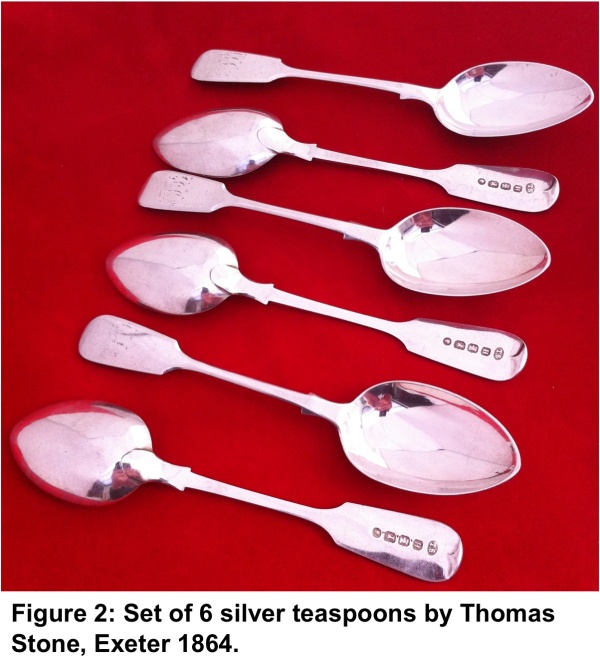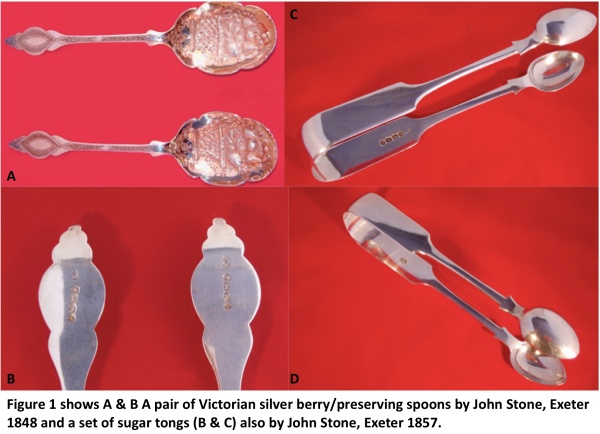The Exeter assay office was officially opened in 1700, and operated until 1883. In the 18th and 19th century Provincial was thought of as being inferior to the silver produced by the London silversmiths. How times have changed. Provincial silver is now very sought after, and pieces carrying the Exeter assay mark attract particular interest from collectors. This is pricipally because of the rarity of Exeter silver.
John Stone (1800-1868) was an Exeter silversmith. His assay marks were registered from 1825 until 1867. He produced mainly flatware items, such as spoons, butter knives, sugar tongs, often in the Fiddle pattern and Old English pattern (Figure 1).
John Stone is listed in White’s Devonshire Directory of 1851 at 30 New Bridge Street. The census returns show him resident at this address in 1841 and 1851. By 1861, John Stone appears in the census returns at 36 The High Street Exeter. The size of his workshop remains constant over this period, as he is shown as employing 6 men in all 3 entries.
John Stone had 3 sons and a daughter. He was followed into the business by his eldest son, Thomas Hart Stone. Born in 1838. Thomas appears at boarding school in West Teignmouth in the 1851 census. By 1861 he had joined his father in business, being listed on the census at 36 High Street. Thomas’ own assay mark was registered in 1863, and after the death of his father, John Stone in 1868, he took over the business and like his father, made silver flatware (Figure 2). Thomas married Frances Emily Rookes early in 1869, and the birth of their daughter Anna Matilda Stone was registered in Q4 of that year. The 1871 census shows him still at 36 High Street with his family and apprentice John Tyle. Unfortunately, Thomas didn’t long survive his father. He died in 1873 aged 36, and his apprentice John Tyle did not go on to register his own makers mark.
